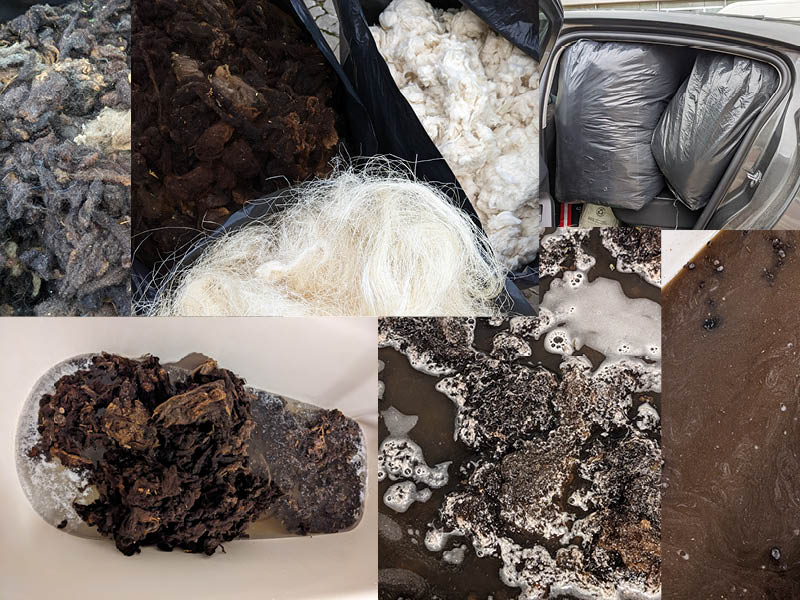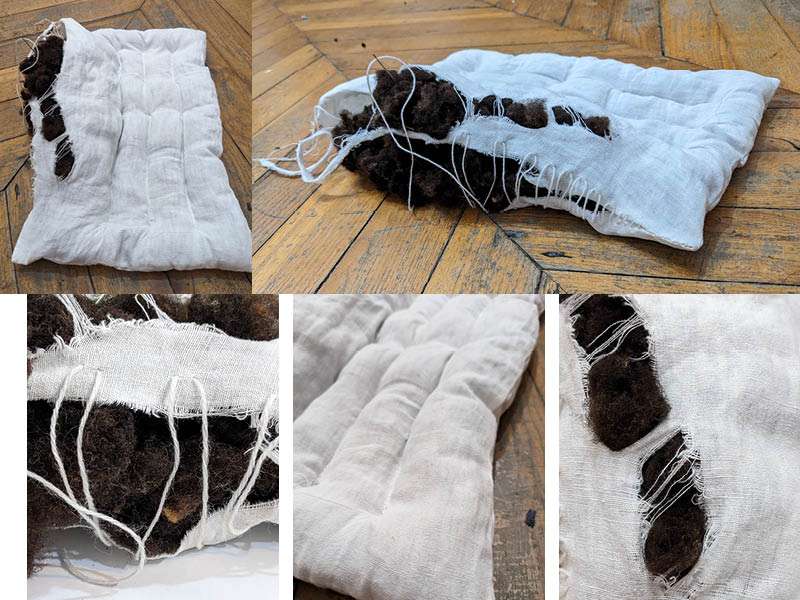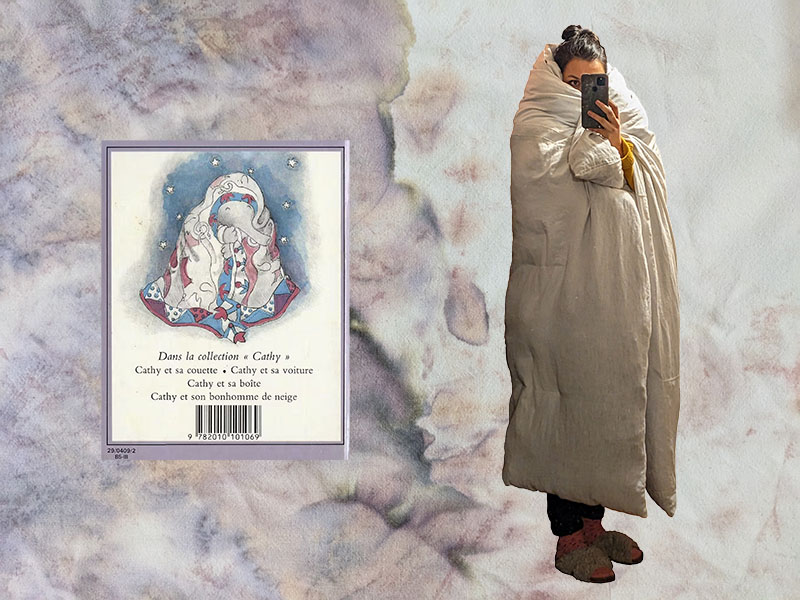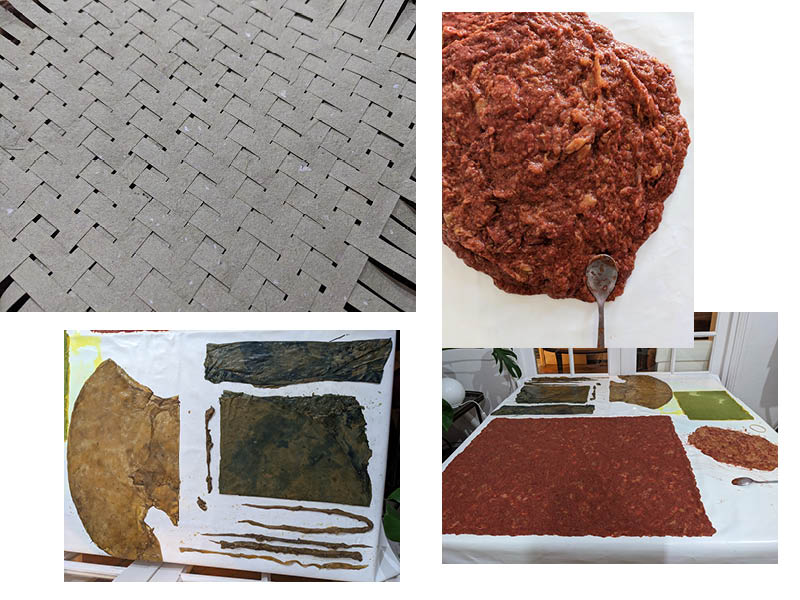Process¶
Ideation & sketches¶
It all started with a message on facebook: someone from the Art Contemporary Biennale said they were giving raw wool. With my mates, we went to pick it up so we could have a large stock of raw material, moreover natural and usefull in many ways.
I immediately wanted to wash it to experiment with, so I can consider to work it for real.

10/01
What stays after burning?
I can't find no more my textile classes, but didn't I kept a trace of it, and where? Je ne retrouve pas mes cours de textile. En gardé-je une trace, et où?
Memory is fallible. La mémoire est faillible.
25/01
Having a cover is protecting ourselves from our own truth.
Design & Fabrication¶
First, I wanted to buy a pair of carding brushes, but the cost dissuaded me. My first attempt in engeneering a DIY tool was super rough, I made a sort of big brush, with screws in a piece of wood, looking like an enormous and ridiculous toothbrush. Seeing it could work if I didn't take screws but nails, I talked of it with my father and he said he could built something for me if I gave him the needs.
That's how I asked him a fakir board.
In the meantime, I alos bought a pair of hair brushes, to unravel the wool, but as I have big amonts of raw and dirty wool, I first needed a bigger scale tool, so I ask my father to create it : a fakir board, with meium nails, spacing around 4 or 5 centimeters. Without asking more, my father upgraded it to a real board with ledges, antidérapant, more holes, more nails, and a small reversed board to drive correctly the wool inbetween the nails.

At the same time, I started experimenting dyes on my differents types of wool so I can easily see the mix of the colors and conclude if I wanted to have it in my project. But dyes takes a lot of time, and I tryed as much as possible to use this lost time to try another idea : biomatériaux.

Prototypes¶
My first prototype is a small blanket made out of an old cotton bedsheet, bought in a thrift shop, and the wool I washed, and carded.
This piece of sheet was very worn, so when I had ripped a piece, the fabric hasn't resisted and teared more. I decided to keep this accident to let the inside be seen from the outside, even though the blanket is almost all sewed.

Almost finished the first blanket, but I couldn't bring myself to stuff the blanket with only washed and uncombed wool. So I untangle it by hand, to remove the impurities that remained trapped in the bundles of fibers after the first wash (because one wash is enough, whereas for carding, multiple steps are needed).
In the end, I can wrap myself in this blanket.

Mentoring notes¶
31/01 :
Angela¶
- Try very small amount of alginate just to cover the thread, like glue. If you put too much alginate, it becomes too thick and too hard.
Louise¶
-
Can't you try flocking?
-
Why these colors? Do they mean something? They might mean something as my project talks about me, put some words as there will be a link.
-
Make schemas and presentation of the different blankets you aim to realize to explain you ain't gonna work all the experimentations on the same blanket.
Half-fabrication files¶
Papers and died kombucha


Here are the next level of blankets : playing with the Photoshop layers, I created new images, new combinaisons of visual sensations and emotions.
Think of uploading your hand-drawings, "frankenstein prototypes", pictures with notes, everything that shows your thinking process and initial development of your personal project. Giving inside in your process, will help the mentors to assist you further in your development.
research papers can also be linked through an online link or when optimised, PDFs of research papers can be added to your repository and credited to the writer or researcher